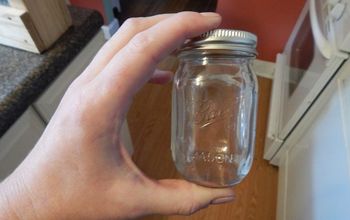How do you get rid of invasive species for good?
Related Discussions
GNATS - How to get rid of them?
Somehow my house and garden got tiny gnats that killed my fuchsia plant and fly everywhere. I have tried ALL the Web recommendations - soap and oil dishes, sand in th... See more
Marigolds growing! Should I pinch the buds?
My marigold plants are growing. I heard that pinching the buds until Autumn will allow them to grow without killing the plant. Is this true?
Growing garlic
Growing our first garlic, should we wait until the leaves are drying out before we pick it? Husband picked first one today along with our first potatoes.
How to keep mice out of your garden?
Hi everyone, I have mice in my garden destroying my vegetables and I have also noticed them in the barn and shed. Please can someone tell me how to prevent them from ... See more
What's the best flower/plant to grow in Texas?
I know that opinions vary, but what's your opinion?!I have great luck w Rosemary plants. Green all year long.



Pull, pull, pull! And have a block party to talk it up with all your neighbors too, so they pull theirs too, at the same time.
Here is one good link with interesting information:
https://emswcd.org/removing-garlic-mustard/
Detailed management options—Medium to large infestations of garlic mustard:
In medium to large sized infestations, a combination of hand pulling, cutting or localized herbicide treatment is appropriate for managing garlic mustard. First, an aggressive effort at hand pulling all newly established or “satellite” infestations is recommended to limit garlic mustard’s spread. Next, consider managing well-establish “core” populations with a combination of pulling, cutting and or herbicides.
Cutting: Cutting flowering plants at ground level by hand or with a string trimmer or lawn mower will kill a high percentage of garlic mustard plants. The lower the cut, the more effectively the plant will be killed. If the plants are flowering, it is important to remove all cut stems since seed development will continue even if the stem is severed from the root. Because mechanical cutting does not remove the root crown, it may be necessary to cut multiple times in a season to prevent seeds from developing on secondary stems that sprout from the rootstock. It will also be necessary to cut for many consecutive years until the seed bank is exhausted. Unselective cutting with a string trimmer or lawn mower damages desirable vegetation and may slow re-establishment of desirable vegetation or even allow garlic mustard populations to expand. The goal is to selectively remove garlic mustard, leaving the desired plant community intact.
Herbicides: Several herbicides have a role in garlic mustard management. Herbicides should only be applied according to their label directions and using the protective equipment specified. Use of application equipment that can direct the herbicide to the target plant and reduce overspray or drift onto non-target plants is required. This is referred to as spot treatment.
It is very important to limit damage to non-target vegetation. If other plants are killed, garlic mustard will likely replace them. Indiscriminate herbicide applications can thus increase garlic mustard populations! As with cutting, the goal is to selectively remove garlic mustard leaving the desired plant community.
As a cool season herb, garlic mustard continues to grow on snow-free days when temperatures exceed freezing. This provides an opportunity for selective treatment of garlic mustard if applications are made when other plants have not yet appeared (spring) or have died for the year (late fall).
Application of 1-2% glyphosate (Roundup) provides effective control of garlic mustard seedlings and rosettes. Note: glyphosate is a non-selective herbicide meaning that it will kill or damage most plants it comes into contact with (including woody plants). However, to be effective, this herbicide must be absorbed by growing leaf tissue or bark, i.e. the plant must be actively growing. Applications in very early spring (March-April) can often be timed for periods when few if any other plants beside garlic mustard are actively growing. Similarly in late fall, applications can be made with reduced risk to many non-target species. However, glyphosate will damage sedges and other species that are actively growing at this time and therefore susceptible to herbicide uptake. Always take precautions to avoid contacting desirable plants with the herbicide. This may include the hard to see stems of small woody shrubs and trees. Bentazon (Basagran) applied at 8 ounces (by weight) per acre may be an acceptable substitute, less effective on garlic mustard but with reduced risk to some non-targets particularly annual and perennial grasses.
Prescribed fire: Professional land managers trained in the use of prescribed fire may also consider burning for control of medium to large infestations of garlic mustard. The effectiveness of fire differs based on site characteristics and management goals. Most research shows that dormant season fires (March) are ineffective in garlic mustard control and that growing season fires (May) suppress garlic mustard but also adversely affect native understory forbs. Carefully timed spring fires (after garlic mustard emergences but prior to emergence of desirable plants) may be effective. While a single dormant season fire (fall) might actually increase the abundance of garlic mustard the following spring, repeated burns (fall, spring, spring; or spring, spring, spring), have been used to maintain garlic mustard in a reduced condition and stimulate herbaceous species richness and cover. This fire regime did not reduce the number of woody shoots but did decrease their height in the fire-adapted oak woodland where it was tested. Fire accelerated loss of woody seedlings on upland but not lowland sites.